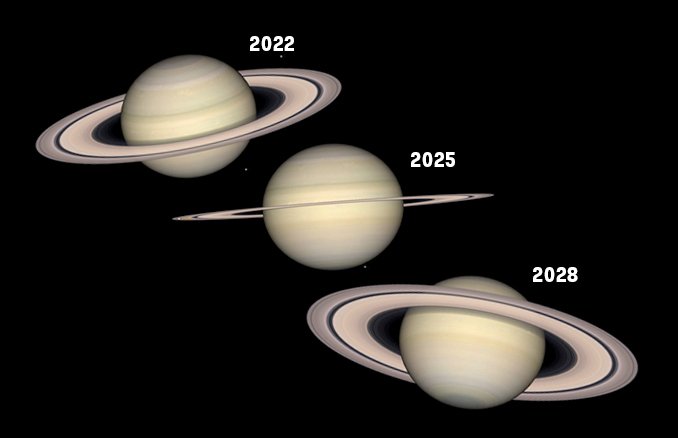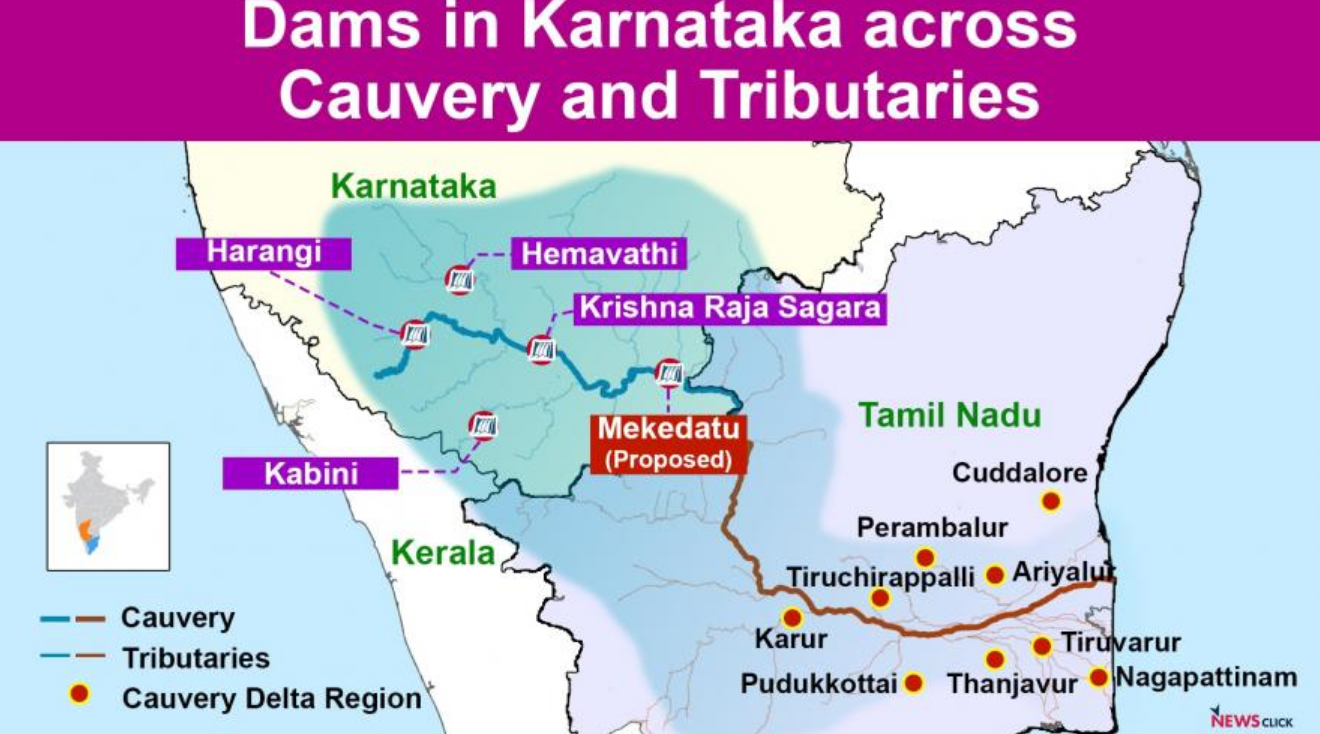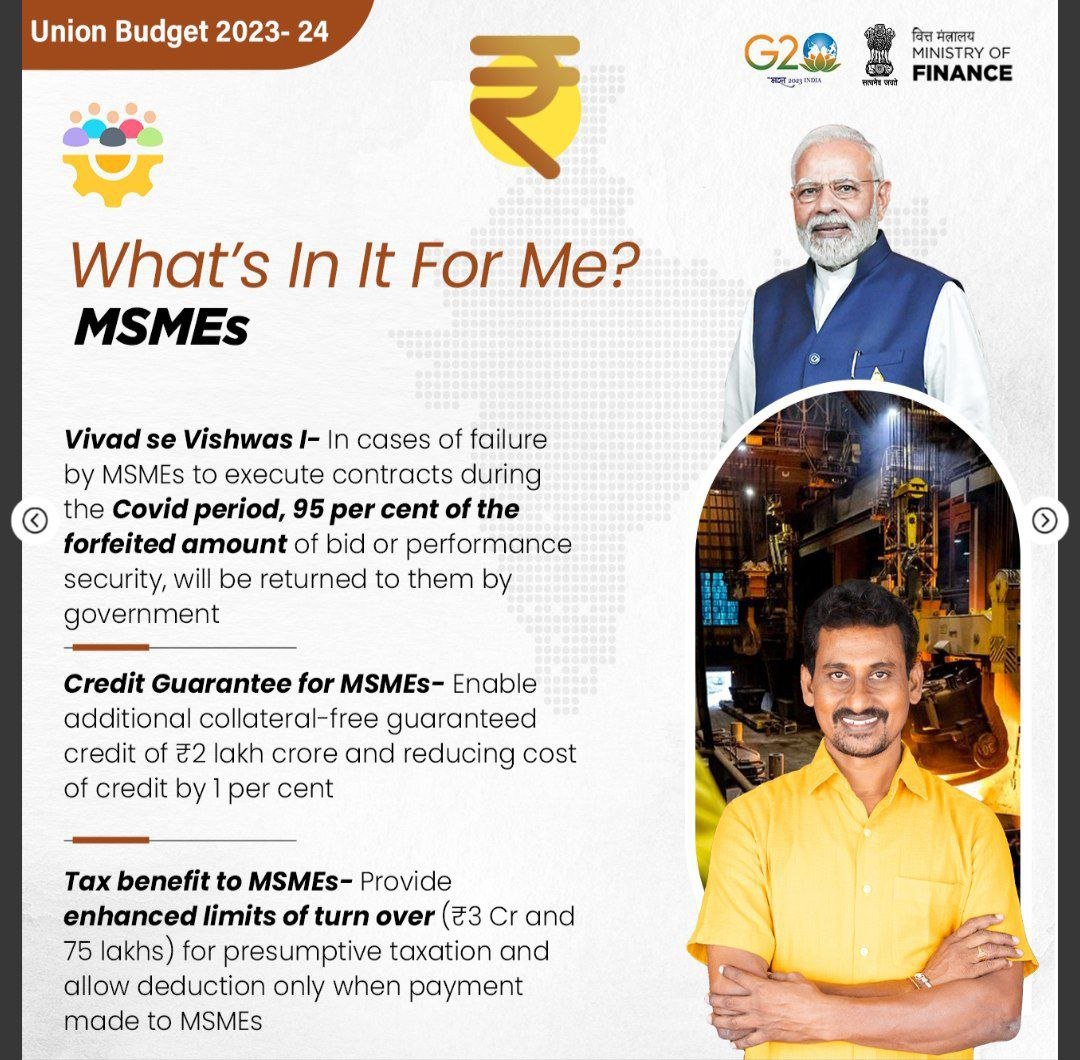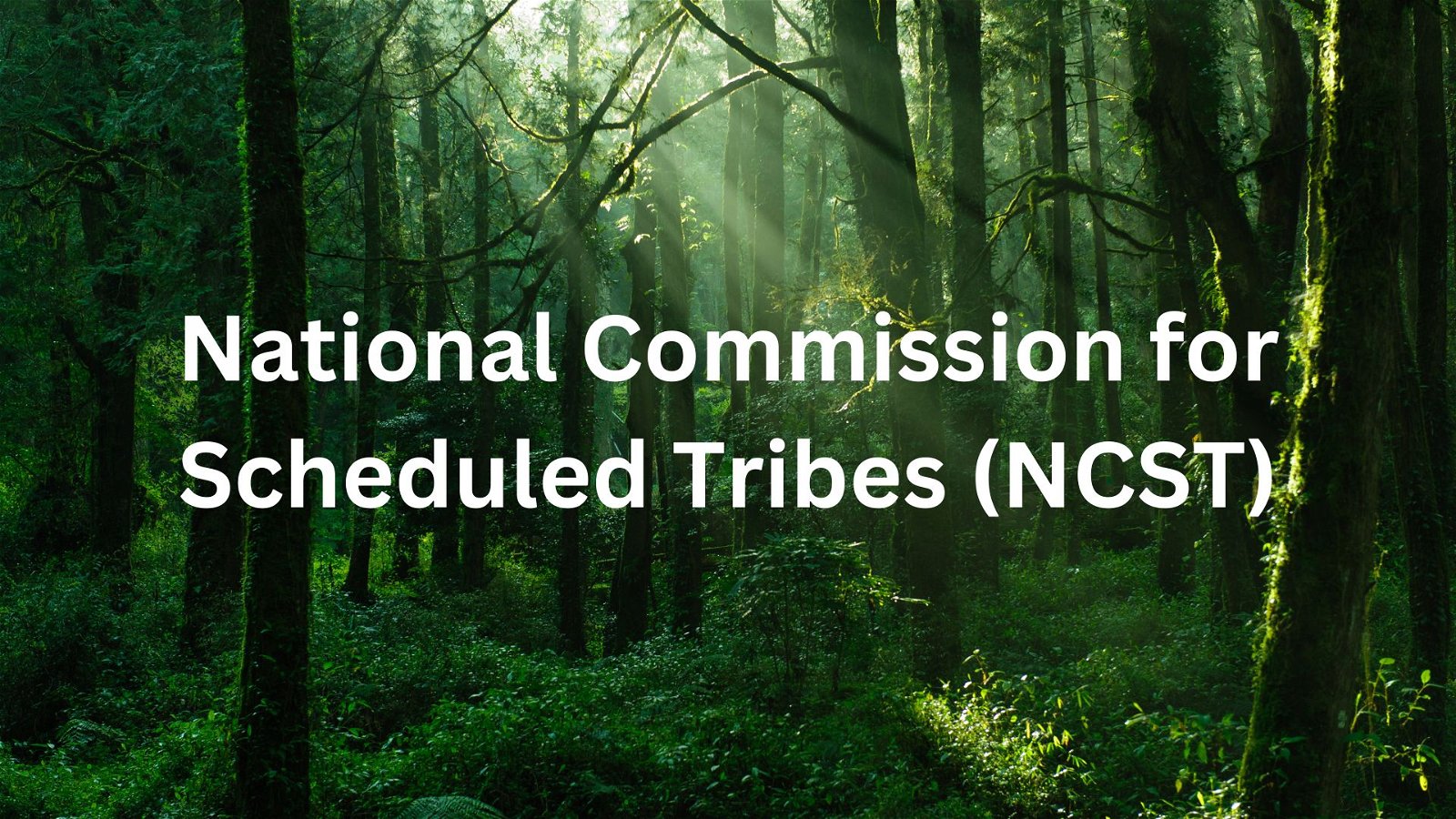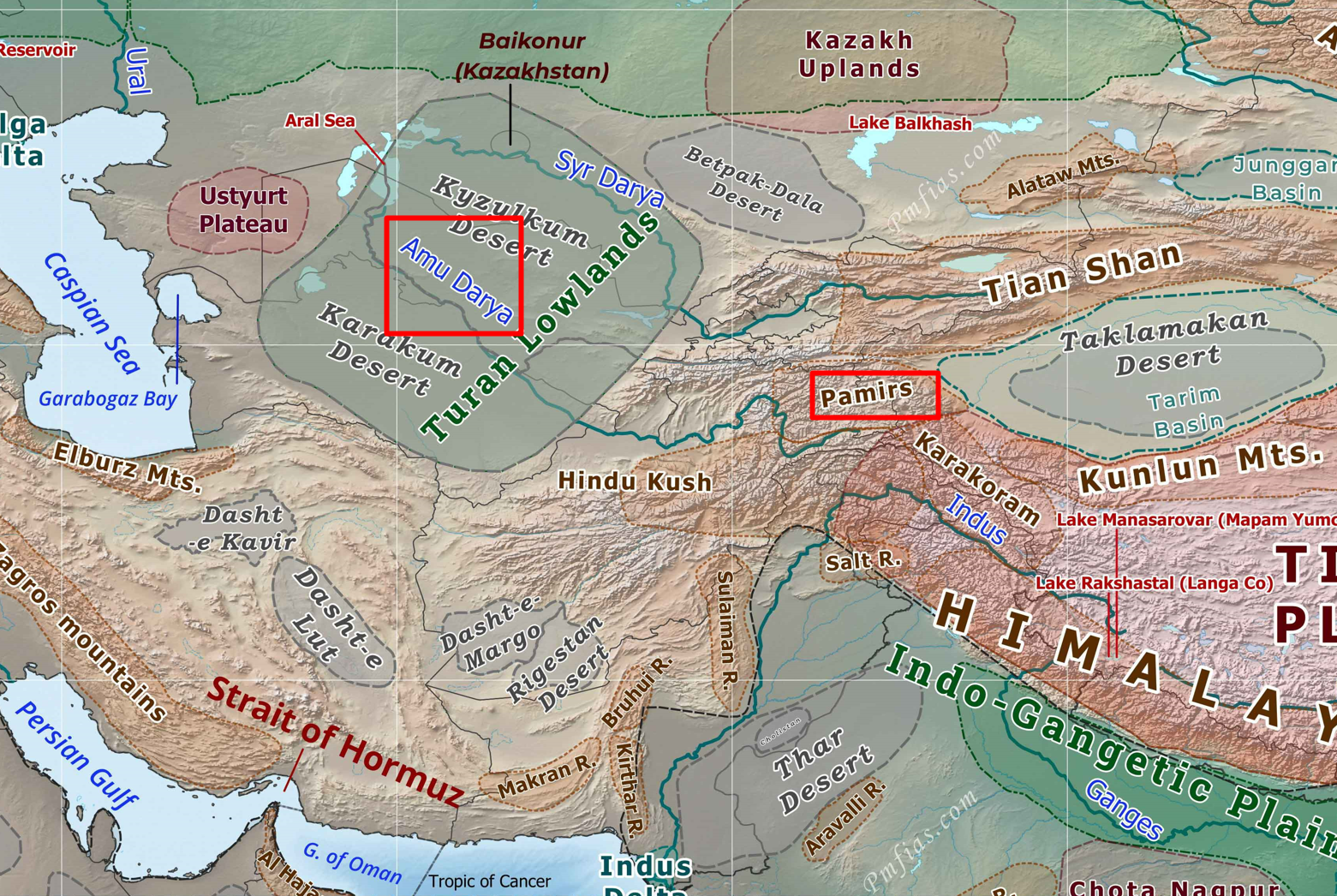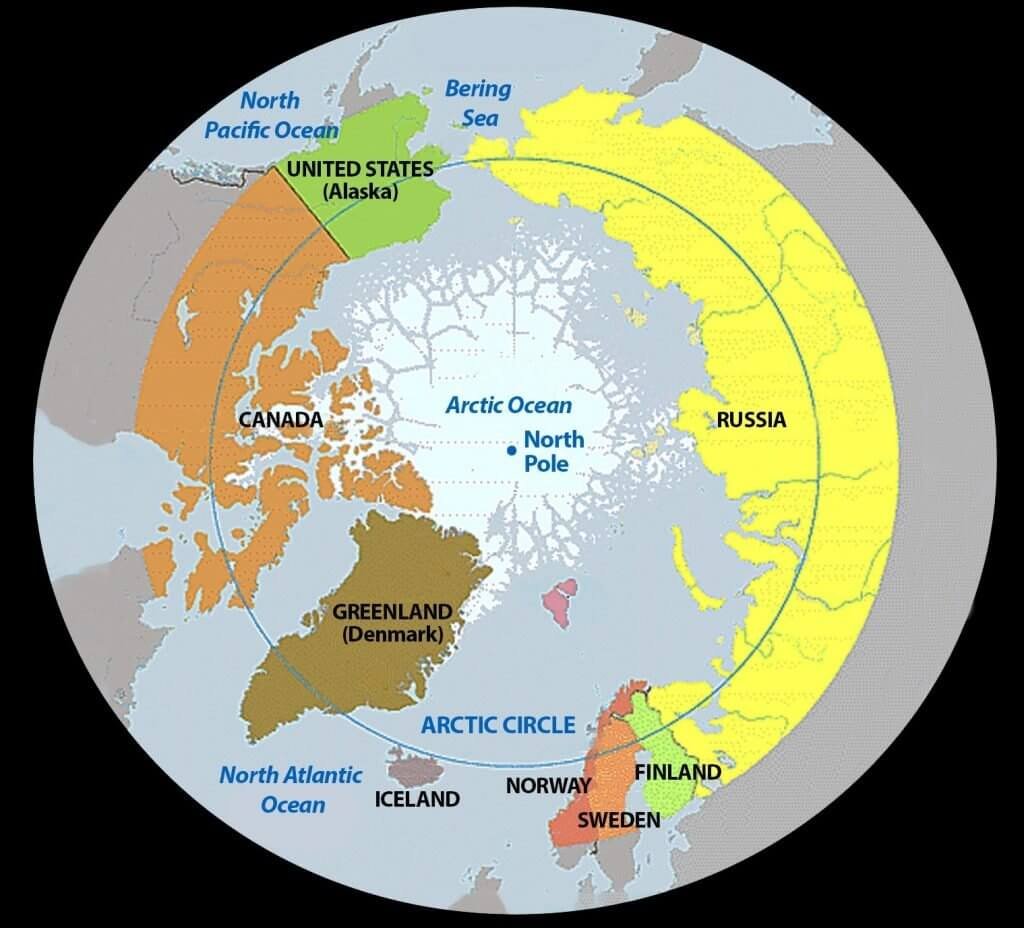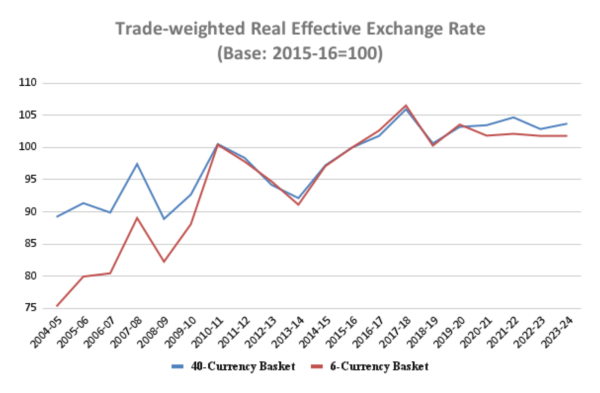
Current Affairs for UPSC Civil Services Exam – March 09, 2024
Subscribers of "Current Affairs" course can Download Daily Current Affairs in PDF/DOC
Subscribe to Never Miss an Important Update! Assured Discounts on New Products!
Must Join PMF IAS Telegram Channel & PMF IAS History Telegram Channel
{GS1 – Geo – PG – Geomorphology} Anthropocene
- Context (IE): A group of 18 scientists has rejected a proposal to officially designate the beginning of the Anthropocene, also known as the Human Epoch, in geological time.
- The Anthropocene Working Group (AWG) submitted its proposal to declare the Anthropocene epoch to the International Union of Geological Sciences (IUGS) last year.
- The proposal went up for a vote in February by the Sub commission on Quaternary Stratigraphy (SQS), a part of the International Commission on Stratigraphy (ICS) within the IUGS.
- The SQS voted 12 to 4 against the Anthropocene proposal, with two abstentions.
- The IUGS committee decided that introducing an Anthropocene epoch and ending the Holocene wasn’t supported by the standards used to define epochs in chronostratigraphy.
Anthropocene
- In 2000, Paul Crutzen (Dutch meteorologist) and Eugene Stoermer (American botanist) introduced the term Anthropocene (Anthropos: related to humankind).
- It suggests a distinct human epoch, emphasising human influence.
- Those supporting Anthropocene argue that human activities have significantly altered the Earth, marking the onset of a new geological epoch.
- Significant changes: Human population sharply increased, fossil fuel consumption surged, the spread of nuclear weapons, Nitrogen-based fertilisers became widespread, and plastic use became common.
- In 2009, the Anthropocene Working Group (AWG), consisting of 37 researchers, started discussing when the Anthropocene epoch might have begun.
- After extensive deliberation, they chose the year 1952. This period is labeled the Great Acceleration.
How is the history of Earth divided?
- Scientists who study the Earth use the geologic time scale (GTS) to measure the history of the planet.
- The GTS (since the formation of Earth roughly 4.54 billion years ago) is divided, in descending order of duration, into aeons, eras, periods, epochs, and ages.
- Currently, we are in,
- Aeons: Phanerozoic.
- Era: Cenozoic.
- Period: Quaternary.
- Epoch: Holocene.
- Age: Meghalayan.
- The GTS is based on chronostratigraphic classification.
- Stratigraphy: Branch of geology that deals with the study of rock layers (or strata).
- Chronostratigraphy: (chrono: relating to time) It is an aspect of stratigraphy that deals with the relation between rock strata and the measurement of geological time.
- Chronostratigraphic units, such as aeons, eras, periods, epochs, and ages, don’t have uniform durations like days or minutes.
- The shifts from one unit to another are characterized by events, sometimes violent, such as mass extinctions, that significantly impact the planet and its living conditions.
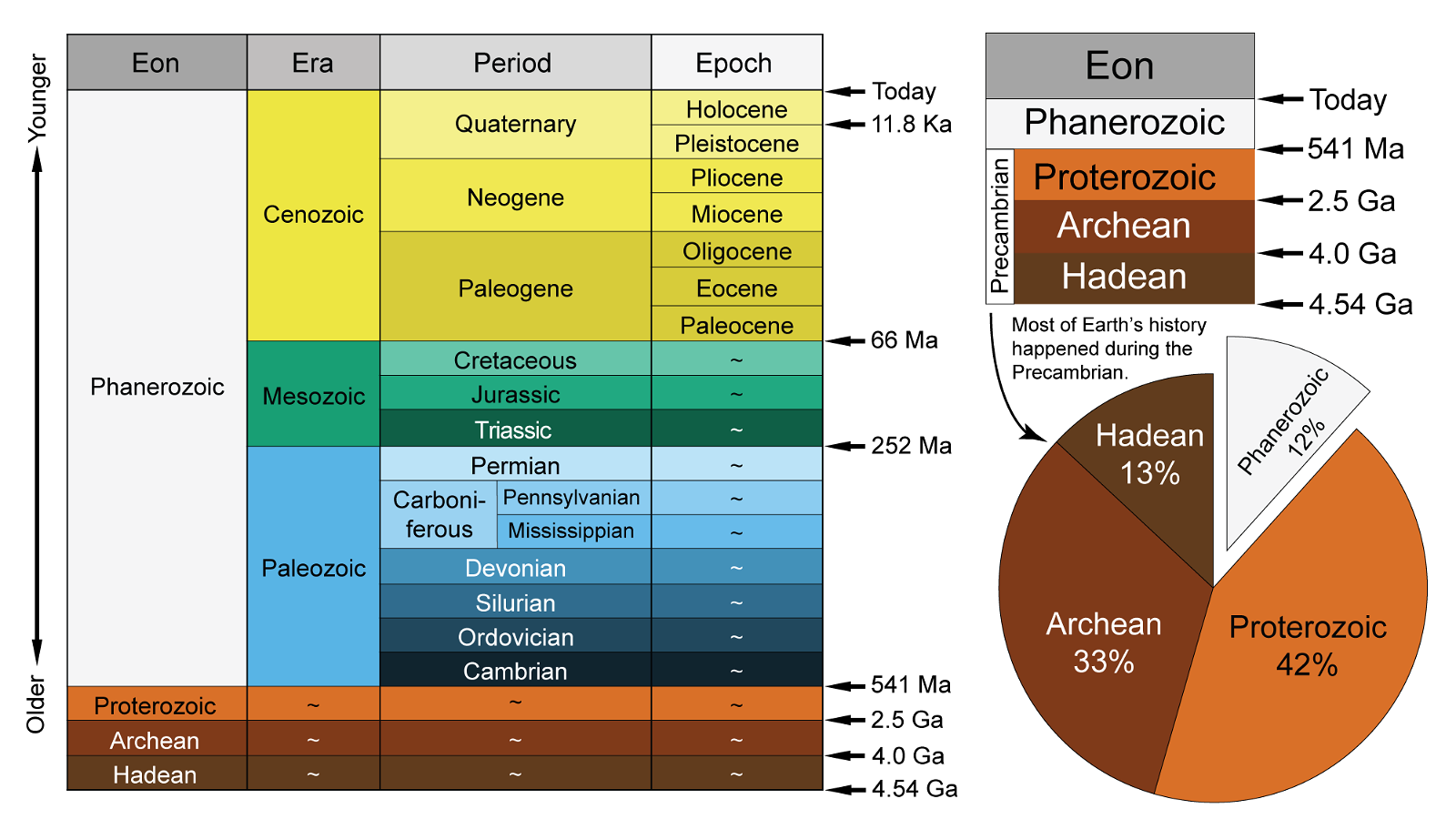
Significance of Holocene epoch
- The Holocene epoch began some 11,700 years ago, at the end of the Last Glacial Period (LGP).
- During the LGP, up to 25% of the Earth’s land surface was covered by glaciers, the mean sea level was up to 400 feet lower, and the average temperature fell to 8 degree Celsius.
- It witnessed Earth’s warming, aligning with the emergence and spread of human beings.
- Although Homo sapiens evolved before the Holocene, all of humanity’s recorded history is within this epoch.
Way forward
- Scientists suggest the Anthropocene should be viewed as an event a looser geological term not requiring official approval.
{GS2 – Governance – Initiatives} Kerala’s State-owned OTT Platform- CSpace
- CSpace is a response to challenges in the OTT sector, addressing content imbalances.
- It is managed by KSFDC, a state-owned company entrusted with the promotion of Malayalam cinema for the Government of Kerala.
- To select and approve the content, KSFDC has constituted a curator panel of 60 members, including eminent cultural personalities from the state.
- Only the content recommended by the curators will be showcased on the platform.
- The platform, which operates on a pay-per-view basis, allows viewers to watch a feature film for Rs 75 and shorter content for a much lower price.
- Exactly half of the amount charged goes to the content provider.
- It also intends to launch a new pattern in crowdfunding by offering filmmakers an opportunity to recoup the production cost through the support of viewers watching their films.
- It responds to the challenge of dwindling profits caused by producers releasing films directly on OTT platforms.
{GS2 – MoCAFPD – Initiatives} Right to Repair Portal
- Context (PIB): The Department of Consumer Affairs conducted a Stakeholders Meeting on the Right to Repair Portal in India.
About the Right to Repair Portal
- The portal allows consumers to access repair-associated information for their products and reduce e-waste.
- The information includes:
- Access to product manuals/repair videos (by linking the companies websites and YouTube channels).
- Price and warranty of spare parts.
- Explicit mention of differences in liability covered guarantee, warranty and extended warranty.
- Details of Companies Service Centre across India and Recognition of third-party repairers, if any, by the companies.
- Information on country of origin to be explicitly mentioned.
Need
- Products that cannot be repaired are intentionally designed with planned obsolescence (meaning they have an artificially limited lifespan).
- This results not only in electronic waste but also compels consumers to purchase new products since repairs are not an option for reuse.
- Sometimes, spare parts are unavailable, causing significant distress and financial burden for consumers who already purchased the products.
- To safeguard the rights of consumers.
- Aligned with the Mission LiFE (Lifestyle for the Environment) vision, the goal is to shift from a use and dispose economy to a circular economy.
- This promotes thoughtful and intentional use, aiming to replace mindless and wasteful consumption practices.
- It also incorporates the R3 concept, i.e. Reduce, Reuse (repair) and Recycle.
{GS2 – MoCI – Schemes} UNNATI – 2024
- Context (PIB): The Government formulated the New Industrial Development Scheme, UNNATI (Uttar Poorva Transformative Industrialization Scheme), 2024.
- The Ministry of Commerce and Industry, Department for Promotion of Industry and Internal Trade, proposes a 10-year term with 8 years for committed liabilities.
- It is a Central Sector Scheme that aims to foster economic growth and industrialisation in the North–Eastern Region (NER) of India.
- All eligible Industrial Units are to commence their production or operation within 4 years from the grant of registration.
Features
- Districts are categorised into two zones: Zone A (Industrially Advanced Districts) & Zone B (Industrially Backward Districts)
- Maximum Eligible Benefits: Rs. 250 Cr. per unit from all components of the scheme.
- Fund allocation: 60% of the outlay of Part A has been earmarked to 8 NE states and 40% on a First-In-First-Out (FIFO) basis.
- Implemented by: DPIIT, in cooperation with the states.
Capital Investment Incentive
- Zone A: 30% of eligible investment value in plant and machinery/construction of building & durable assets, capped at Rs. 5 Cr.
- Zone B: 50% of eligible investment value in plant and machinery/construction of building & durable assets, capped at Rs. 7.5 Cr.
- GST is not applicable for investments with a cap of Rs. 10 Cr.
- Eligibility: Applicable for both new and expanding units.
Central Capital Interest Subvention
- Zone A: 3% interest subvention for 7 years.
- Zone B: 5% interest subvention for 7 years.
- Eligibility: Applicable for both new and expanding units.
Manufacturing & Services linked incentive (MSLI)
- Applicable only for new units.
- Linked to Net Payment of GST (GST paid less Input Tax Credit).
- Zone A: 75% of eligible investment value in Plant & Machinery (P&M).
- Zone B: 100% of eligible investment value in P&M.
- No MSLI incentive where GST is not applicable.
{GS2 – Polity – IC – FRs} Right to Sit
- Context (TP I TH): A decade after the Right to Sit campaign was launched, and Kerala amended the Kerala Shops and Establishments Act in 2018, several employers still do not abide by the law.
- The TN Government also passed the amended TN Shops and Establishment Act, 1947, making it mandatory to provide seating for salesmen and working staff at Shops, storefronts, etc.
- The struggle for the ‘right to sit’ grew intense in 2012 when a textile unit in Kozhikode (Kerala) cut the salary of a saleswoman who was resting while a group of customers were shopping in the showroom.
- In 2016, the protest gained state-wide worker support and national attention, prompting the NHRC to pressure Kerala’s government for action.
Highlights of Kerala Shops and Establishments Act, 2018
- The Act amended the 1960 Act.
- It mandates that suitable seating arrangements shall be provided for all workers in every shop and establishment.
- An employer can now employ any women worker between 9 p.m. and 6 a.m. only after obtaining the consent of the women worker.
- The employer needs to ensure that an adequate number of women are part of a group working between 9 p.m. and 6 a.m.
- The employer is under an obligation to make a proper arrangement with respect to the prevention of women from sexual harassment and also to provide transport facilities to all such women from the shop or establishment to their house.
Right to Sit
|
Significance of Implementation of ‘Right to Sit’
- Prolonged standing at work has been proven to be associated with numerous health outcomes, such as
- Achilles tendons,
- Restricted blood flow, and
- Varicose veins,
- These health issues directly impact the health of a person, thereby infringing on their right to a healthy life, which is a concomitant of the ‘Right to Life’ under Article 21 of the IC.
Constitutional Provisions
- Article 42 of Part-IV of the IC embodies that the state shall make provisions for securing just and humane conditions for work and maternity relief.
- International Instruments and the law of ‘Right to Health’ under Article 21 make it clear that ‘Right to Sit’ forms an integral form of ‘Right to Life’.
- Article 21 has paved the path for a slew of new rights to emerge including the “right to health.”
- The SC -‘Francis Coralie Mullin vs The Administrator, Union (1981): “any act which damages or injures or interferes with the use of, any limb or faculty of a person, either permanently or even temporarily, would be within the inhibition of Article 21”.
- The SC -‘In CERC vs. Union of India (1995)’: ‘Right To Health’ of a worker is an integral facet of the right to life.
- Article 21 has paved the path for a slew of new rights to emerge including the “right to health.”
|
{GS2 – Social Sector – Health} India to restart Penicillin G Manufacture
- Context (IE): After 30 years, Hyderabad-based Aurobindo Pharma will begin producing Penicillin G by mid-2024, a widely used antibiotic.
- In the 90s, around five companies, including Torrent, manufactured Penicillin G in India.
- However, India stopped producing Penicillin G and other Active Pharmaceutical Ingredients (APIs) due to the influx of cheaper Chinese products flooding the market, driven by subsidies.
- For example, India used to sell paracetamol for around Rs 800 per kg, but China brought the prices down to nearly Rs 400 per kg, making it unviable for Indian manufacturers.
- Penicillin G is a crucial ingredient in manufacturing many common antibiotics.
What is Penicillin G?

Production Linked Incentive Scheme for Pharmaceuticals
- The scheme provides incentives to companies based on increased sales.
- The scheme envisages support of 20% for the first four years, 15% for the fifth year, and 5% for the sixth year on eligible sales of fermentation-based bulk drugs such as antibiotics, enzymes, and hormones such as insulin.
- For chemically synthesized drugs, the incentive will be 10% of eligible sales for six years.
- Significance: There has been a decline in API imports since the launch of the PLI scheme.
|
{GS2 – Vulnerable Sections – PwDs} Accessibility of govt buildings for PwDs
- Context (IE): The Central Public Works Department (CPWD) has asked its regional offices to ensure that “all [public] buildings are accessible to people with disabilities”.
- CPWD is the GoI’s infrastructure construction and maintenance management agency.
- GoI published guidelines laying down standards for universal accessibility in the country in 2021.
- These guidelines were in accordance with the Rights of Persons with Disabilities Act, 2016.
- The recent CPWD instruction sought compliance with two specific provisions, viz.,
- Audio announcements in lifts, and
- Marking of evacuation routes for people with disabilities.
Rights of Persons with Disabilities Act, 2016 (RPwDA)
- The Act replaced the Persons with Disabilities Act of 1995.
- It aims to provide equal opportunities to persons with disabilities in India.
- The Act expanded the criteria for disabilities and added more types of disabilities to the list.
- The GoI is empowered to add more types of disabilities to the list.
- The Act also provides for establishing a National Commission and state commissions for Persons with Disabilities.
- A study conducted by the Disability Rights India Foundation (DRIF) on the implementation of the Rights of Persons with Disabilities (RPWD) Act across 24 States has revealed-
- More than half of the states have not notified the State rules.
- Only ten states, including Bihar, Chandigarh, Manipur, Meghalaya, Odisha, Telangana, Tamil Nadu and West Bengal, have notified the rules.
- Rajasthan was recognised as the best State in the implementation of the Accessible India Campaign on the occasion of the International Day of Persons with Disabilities (December 3rd).
Accessible India Campaign (AIC)
|
Provisions of RPwDA
- According to the RPwDA, a person with a disability is someone who has a long-term impairment that affects their physical, mental, intellectual, or sensory abilities.
- This impairment prevents them from participating fully and effectively in society.
- The number of disability categories has increased from 7 to 21.
- Physical Disability – Locomotor Disability; Leprosy Cured Person; Cerebral Palsy; Dwarfism; Muscular Dystrophy; Acid Attack Victims; Visual Impairment (Blindness; Low Vision); Hearing Impairment (Deaf; Hard of Hearing); Speech and Language Disability.
- Intellectual Disability – Specific Learning Disabilities; Autism Spectrum Disorder.
- Mental Behaviour – Mental Illness
- Disability caused by – Chronic Neurological Conditions (Multiple Sclerosis; Parkinson’s disease), Blood Disorder (Haemophilia, Thalassemia, Sickle Cell Disease), and other Multiple Disabilities.
- People with at least 40% of the disabilities mentioned above are considered to have “benchmark disabilities.“
- The RPwDA, 2016, contains several provisions related to education and skill development of persons with disability.
- Reservation – Higher education (not less than 5%), government jobs (not less than 4 %), reservation in allocation of land, poverty alleviation schemes (5% allotment), etc. have been provided.
- This is in addition to the existing reservations for Scheduled Castes and Scheduled Tribes.
- It reserves specific seats in the local government bodies (Panchayats and Municipalities) for persons with disabilities.
- Ex. – Chhattisgarh made the presence of PwDs mandatory in all panchayats across the state by amending the State Panchayati Raj Act, 1993.
- Inclusive Education: Government-funded/recognised educational institutions must provide inclusive education to children with disabilities.
- Free education: Every child with a benchmark disability between the ages of 6 and 18 has the right to free education.
- Discrimination: The RPwD Act prohibits discrimination against persons with disabilities and ensures that they have equal access to education, employment, and other opportunities.
- Accessibility: It promotes a barrier-free environment and reasonable accommodation in workplaces and educational institutions.
- Regulation and Grievance Redressal: The Chief Commissioner for Persons with Disabilities and the State Commissioners will act as regulatory bodies and Grievance Redressal agencies.
- Funds: A separate national and state fund will be created to provide financial support to persons with disabilities.
- Community life: The Act promotes the right of persons with disabilities to live independently and be included in the community.
- It also provides for the establishment of community-based rehabilitation programs and services.
- Social Security: The Act provides for various schemes and programs for social security, health care, rehabilitation and recreation of persons with disabilities.
- It also provides for insurance schemes for their benefit.
- Central Advisory Board on Disability: This is a statutory body that advises the GOI on policies and programs relating to disability.
- It consists of representatives from various ministries, state governments, experts, organisations and persons with disabilities.
- State Advisory Boards on Disability at the state level to advise the state governments on disability matters.
Constitutional Provisions for PwDs
- Article 41 of the IC (DPSP): The state shall make adequate provisions for securing the right to work, education, and public assistance in cases of unemployment, old age, sickness, and disablement within the limits of its economic capacity and development.
- The subject of ‘relief of the disabled and unemployable’ is specified in the state list of the Seventh Schedule of the IC.
Stats related to Disability in India
- In India, out of the 121 Cr population, 2.68 Cr persons are ‘disabled’, which is 2.21% of the total population.
- 7.62% of the disabled persons belong to the age group 0-6 years.
- Majority (69%) of the disabled population resided in rural areas.
Issues Related to Persons with Disability in India
Discrimination
- The stigma attached to persons with disabilities, compounded by a lack of understanding of their rights, makes it difficult for them to attain their valued “functioning’’.
- Women and girls with disabilities are at a higher risk of experiencing sexual and other forms of gender-based violence.
Health
- A large number of preventable disabilities arising from medical issues during birth, maternal conditions, etc. do not get treated because of a lack of awareness, and lack of accessible medical facilities.
Education and Employment
- Lack of availability of special schools, access to schools, trained teachers, and educational materials for the disabled.
- Even though many disabled adults are capable of productive work, disabled adults have far lower employment rates than the general population.
Political Participation
- The exclusion of disabled people from the political space happens at all levels of the political process in the country in different ways, such as:
- Lack of live aggregate data on the exact number of disabled people in the constituencies.
- Inaccessibility of the voting process (no widespread adaptation of braille electronic voting machines).
- Barriers to participation in Party Politics.
- Political Parties in India generally do not find people with disabilities as the large electorate to address their needs specifically.
Lax Implementation
- The government has had some admirable initiatives to improve the condition of PwDs.
- However, even now, most buildings in India are not disability-friendly, despite the GOI instructing all ministries to make their buildings accessible to persons with disabilities.
- Similarly, the RPwDA has provided a reservation quota for persons with disabilities in government jobs and higher education institutions, but the majority of these posts are vacant.
UN Convention on the Rights of Persons with Disabilities (UNCRPD)
- The UN Convention on the Rights of Persons with Disabilities is an international human rights treaty dealing with the rights of disabled people.
- It was adopted in 2006 in the New York headquarters of the United Nations and entered into force in 2008.
- Currently, the convention has received 177 ratifications.
- The UNCRPD is aimed at:
- Ending discrimination against persons with disabilities.
- Enabling persons with disabilities to live independently.
- Making the education system more inclusive.
- Making sure persons with disabilities are protected against all forms of abuse, violence and exploitation.
- India is a signatory to the convention.
Initiatives to Empower PwDs
India
- Unique Disability Identification Portal
- Accessible India Campaign
- DeenDayal Disabled Rehabilitation Scheme
- Assistance to Disabled Persons for Purchase/fitting of Aids and Appliances
- National Fellowship for Students with Disabilities
Global
- Incheon Strategy to “Make the Right Real” for Persons with Disabilities in Asia and the Pacific.
- United Nations Convention on Rights of Persons with Disability.
- International Day of Persons with Disabilities
- UN Principles for People with Disabilities
{GS3 – Agri – Tech} Namo Drone Didi Scheme
- Context (PIB): PM praised Namo Drone Didis for their innovation, suitability, and self-reliance.
- Namo Drone Didi Scheme is a Central Sector Scheme that aims to empower women Self Help Groups (SHGs) by providing them with drones.
- The scheme focuses on 15,000 selected Women SHGs during the period from 2023-24 to 2025-2026.
- The scheme involves collaboration between various government departments:
- Department of Agriculture & Farmers Welfare (DA&FW)
- Department of Rural Development (DoRD)
- Department of Fertilizers (DoF)
- Lead Fertilizer Companies (LFCs)
- 80% central financial assistance will be provided to women SHGs for purchasing drones and related accessories.
- SHGs can raise the remaining cost through the National Agriculture Infra Financing Facility (AIF).
- The maximum subsidy amount is Rs. 8 Lakh per drone.
Eligibility Criteria
- SHGs must be registered and operational.
- It should have a minimum of 10 active members.
- At least 70% of the members in the SHG should be women.
- SHG members should have basic financial literacy to understand the scheme’s benefits and requirements.
- It gives preference to SHGs from marginalised sections, including Scheduled Castes (SCs), Scheduled Tribes (STs), and Other Backward Classes (OBCs).
- SHGs interested in participating should be interested in agriculture-related activities.
- They should be willing to provide drone services to farmers for agricultural purposes.
- They should be willing to maintain and operate drones effectively.
Role of Lead Fertilizer Companies (LFCs)
- LFCs will act as intermediaries between drone suppliers and SHGs.
- They will also promote the use of Nano Fertilizers (such as Nano Urea and Nano DAP) through drones.
Expected Impact
- The scheme aims to provide sustainable business and livelihood support to 15,000 SHGs.
- Advanced drone technology will enhance agricultural efficiency and crop yield and reduce operational costs for farmers.
{GS3 – Envi – Degradation} Kerala declares Man-animal conflict as disaster
- Context (IE): Kerala became the 1st state to declare man-animal conflict a state-specific disaster.
- This decision was made due to repeated deaths from animal attacks and the growing anger surrounding such incidents.
Significance of the declaration
- Firstly, the forest department is in charge of managing man-animal conflict under the Wildlife Protection Act currently.
- However, with Kerala declaring it a state-specific disaster, the responsibility shifts to the state disaster management authority.
- This allows for quicker and more decisive action in dealing with the issue.
- Secondly, it also allows district collectors to directly intervene in their capacity as the chairman of the district disaster body.
- The Chief Minister serves as the ex officio chairman of the state disaster management authority.
- At the district level, the district disaster management authority is led by the district collector. He also holds the position of executive magistrate.
- Thirdly, once the issue is under the disaster management authority, it can take actions overriding other norms.
- According to section 71 of the Disaster Management Act, only the SC or a HC has jurisdiction to entertain suits related to actions taken by relevant authorities under the Act.
- Section 72 specifies that the Act’s provisions will override any other law during the declared period of a disaster.
|
{GS3 – IE – Employment} Issues concerning India’s workforce
- Context (TH): India is currently experiencing its demographic dividend (a period of significant labour force growth expected to peak in about 20 years and deplete in another 30 to 35 years).
- Despite this advantageous time for increased labour productivity, a majority of the workforce is engaged in low-quality work.
Recent Trends in Labor Force Participation Rate
- Recent data from the Periodic Labour Force Survey (PLFS) indicates positive trends.
- The Labor Force Participation Rate (LFPR) increased from 52.35% (2017-18) to 58.35% (2021-22), mainly due to rural women. This contrasts with the long-term trend of decreasing LFPR since liberalisation.
- The overall unemployment rate also dropped from 6.2% (2017-18) to 4.2% (2021-22), with youth unemployment showing a decline from 12% to 8.5% during the same period.
Concerns
- Though PLFS indicates positive trends, when we examine various job types, such as regular wage/salaried work, casual work, and self-employment, troubling trends emerge.
- The self-employed category, particularly unpaid family workers, saw the most significant growth in employment. However, earnings for the self-employed did not improve noticeably.
- Regular wage and salaried workers, considered the most desirable category, did not see an increase in their share of total employment or average earnings.
- In fact, the top 20% of salaried workers experienced a decline in real daily average earnings.
- Casual workers’ average earnings grew moderately despite a slight decrease in their share of total employment.
- Taken together, own-account workers, casual workers, and unpaid family workers, who form more than three-quarters of working population, are engaged in typically low-productivity work.
- Around 90% of these Indian workers have informal jobs, lacking job security, benefits, and social protection, with lower earnings.
{GS3 – S&T – ISRO} V-SAT (Very Small Aperture Terminal) Stations
- Context (TH): The Ministry of Tribal Affairs is partnering with ISRO for a pilot project, deploying V-SAT (Very Small Aperture Terminal) stations in approximately 80 tribal villages across Jharkhand, Madhya Pradesh, Odisha, and Maharashtra.
- This initiative aims to provide internet services to these tribal areas.
V-SAT (Very Small Aperture Terminal) stations
- It is a two-way satellite ground station enabling communication for voice, data, and video signals.
- VSATs handle both narrowband data and broadband data.
- Narrowband data: Credit card transactions, polling, RFID data, or SCADA
- Broadband data: Satellite Internet access, VoIP, or video.
- They find use in providing connectivity to remote locations, supporting transportable or on-the-move communications and enabling mobile maritime communication.
How does VSAT work?
- VSAT operates with a transceiver and an indoor device.
- A user’s computer connects to an outdoor antenna via a indoor device (box).
- The transceiver in the antenna sends and receives signals to and from a satellite transponder through a hub station on Earth.
- All transmissions pass through the hub station before being retransmitted via the satellite to reach the end user’s VSAT.
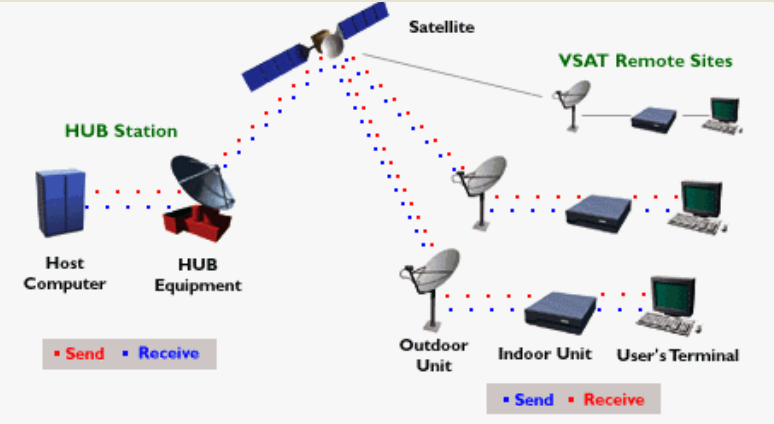
Advantages
- VSAT is cost-effective, lightweight, and operates with low transmission power.
- It utilizes satellite signals, eliminating the need for physical links like Ethernet cables, reducing structural risks.
- VSAT serves as a backup for wired networks during failures and functions independently for local telecommunication networks.
- It can be easily installed in remote locations with minimal infrastructure needs, redirecting satellite signals through a central hub to various locations.
Disadvantages
- VSATs suffer from latency due to the time delay in signals traveling between space and the ground, especially noticeable in two-way communication.
- Weather conditions and obstructions like buildings or trees can cause signal distortion between the satellite and earth station.
Other steps taken for the development of Tribal communities
|
{Prelims – Envi – Species} New Species Of Parasitoid Wasp Discovered
- Context (TH): A new genus and species of parasitoid wasp called Indopria angulata has been discovered by researchers at the Zoological Survey of India (ZSI), Kolkata.

|
- The name “Indopria” combines “Indo” (representing India) and “pria” (meaning “little wasp”).
- The inclusion of “Indo” signifies the country, and the species name “angulata” (Latin) refers to the specialised characteristic of its wings.
- Distinctive Features:
- Semi-abrupt 3–segmented Clava
- Paddle-shaped forewings with angular frenal gutters
- Elongated marginal fringes
- Its specialised wing morphology suggests adaptation to aquatic habitats.
- Indopria wasps, including Diapriid, play a crucial role in maintaining ecological balance.
- Initial research indicates the distribution of Indopria angulata in Odisha, West Bengal, and the Andaman Islands.
{Prelims – In News} Is ghee a livestock product?
- Context (IE): This week, SC affirmed that ghee is indeed a product of livestock.
Background
- In 1994, the Andhra government notified the Andhra Pradesh (Agricultural Produce and Livestock) Markets Act, 1966.
- The Act aimed to simplify and update laws governing the buying and selling of agricultural produce, livestock, and related products.
- It listed ghee as a livestock product for the purpose of regulating its purchase and sale in notified market areas.
- It established interconnected markets and was designed to benefit farmers by ensuring fair prices for their goods.
- The law intended to create direct interactions between producers and traders, cutting out middlemen in the process.
- However, a group of livestock producers challenged the notification, saying that ghee is not a product of livestock and cannot, therefore, be regulated as notified.
- The recent ruling by SC now empowers market committees to levy a fee on the sale and purchase of ghee.
{Prelims – S&T – Defence} INS Jatayu
- Context (IE I TH): Naval Detachment Minicoy will be commissioned as INS Jatayu, an upgraded naval base.
- India has had a naval detachment in Minicoy, the southernmost atoll of the Lakshwadeep archipelago, since the 1980s.
- It will become a naval base with more facilities like an airfield, housing, and personnel.
- INS Jatayu will effectively be the country’s second naval base in Lakshadweep.
- The Navy’s first base on the islands, INS Dweeprakshak in Kavaratti, was commissioned in 2012.
- The GoI is also in the final stages of approving a new airport on Minicoy for both military and civilian use. Lakshadweep has one airstrip at Agatti, but it can only be used by narrow-body aircraft.
- The airstrip will cater to both fighter jets and transport aircraft.
- The Indian Air Force (IAF) will be the lead agency for this project.
- Names of ships, bases, and detachments of the Indian Navy carry the prefix INS.
|

Significance
Strategic location
- It enhances Navy surveillance and operations.
- Minicoy overlooks vital Sea Lines of Communication (SLOCs) in the Arabian Sea and provides a strategic vantage point for monitoring maritime traffic.
|
Maritime Security and Operational Range
- It broadens the Navy’s operational range, enhancing anti-piracy and anti-narcotics efforts in the Western Arabian Sea.
- It underscores India’s commitment to maritime security in a vital area for global trade and energy supplies.
- It will also augment the Indian Navy’s capability as the first responder in the region and augment connectivity with the mainland.
- It will be capable of complete maritime operations just like the Navy’s other facilities, especially the INS Baaz, located on the east coast of India in the Andaman and Nicobar Islands.
Geopolitical dynamics
- Given the changing geopolitical landscape, especially China’s growing influence in the Indian Ocean region, the establishment assumes greater significance.
- It is also essential because of strained relations with the Maldives following the election of a pro-China president.
- India and Mauritius recently jointly inaugurated an airstrip and a jetty on the Mauritian island of Agaléga, showcasing India’s strategic interests in the Indian Ocean.






![PMF IAS Environment for UPSC 2022-23 [paperback] PMF IAS [Nov 30, 2021]…](https://pmfias.b-cdn.net/wp-content/uploads/2024/04/pmfiasenvironmentforupsc2022-23paperbackpmfiasnov302021.jpg)
